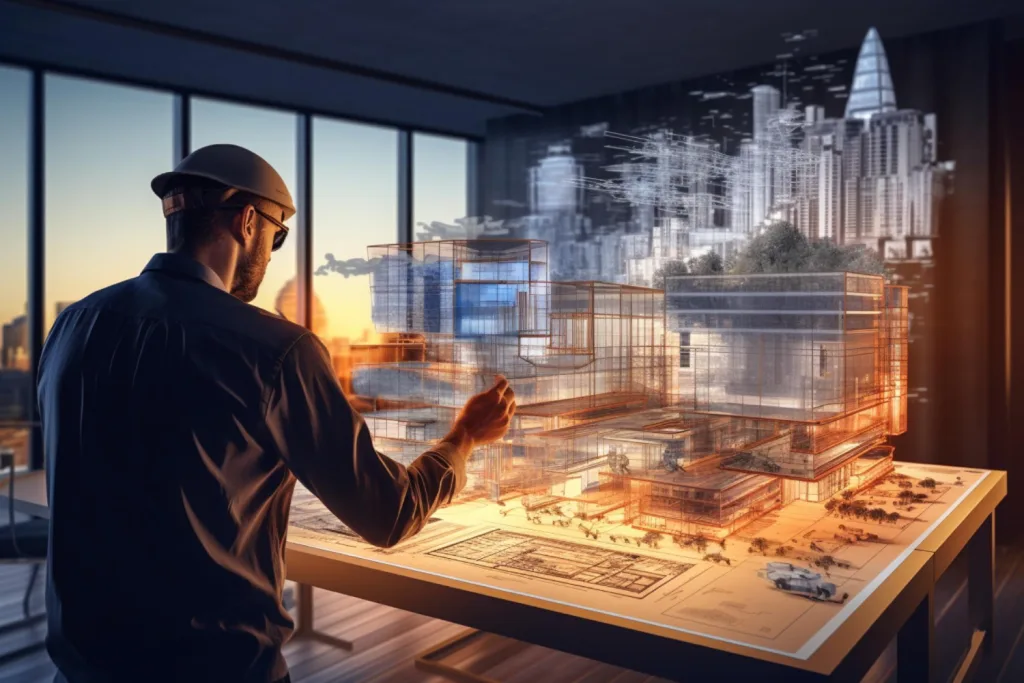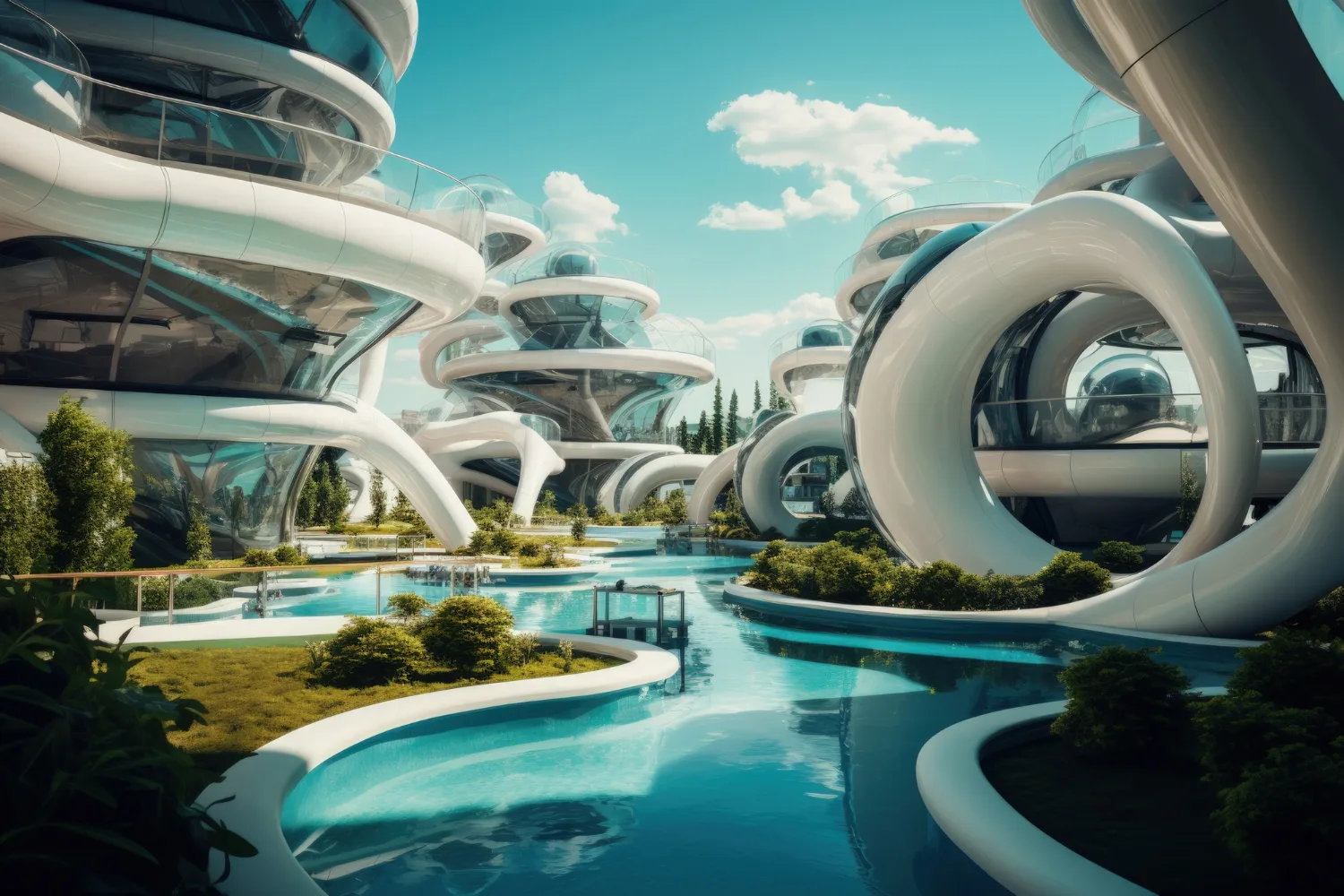Emerging from the shadows of architectural design and engineering is the unexpected ally of generative AI, becoming an asset for those immersed in the wonders of building information modeling. Specifically, the use of Revit, Autodesk’s industry-leading platform, has marked a significant shift in how professionals shape the built environment.
But why is this combination attracting so much interest? It signals a shift towards a more intelligent, dynamic, and adaptable approach to design, where the limitations of human capacity are supplemented by the vast potential of artificial intelligence.
By delving into this article, readers are gently guided through the uncharted digital terrain, equipping themselves with the knowledge to elevate their design protocols.
The marriage of Revit with generative AI not only streamlines workflow but also enriches the design process with data-driven precision, making it an invaluable read for anyone looking to stay ahead in the fast-evolving tech landscape.
The Foundation of Revit and Generative AI
Understanding Revit in Modern Design

At the core of this technological synergy lies Revit. Utilized by architects and engineers worldwide, Revit’s comprehensive toolkit facilitates 3D design and documentation throughout the project lifecycle.
As the backbone of many architectural projects, it handles complex geometries and databases with relative ease, ensuring all team members work with up-to-date, consistent information.
The Rise of Generative AI
Generative AI, meanwhile, has been making strides as an innovative force capable of crafting design alternatives based on specific input criteria.
This algorithm-driven approach can generate thousands of variations in a matter of minutes, offering solutions that might have been overlooked by even the most seasoned professionals.
Incorporating generative AI into the Revit workflow means harnessing this power to produce designs that are not only functional but also highly innovative and efficient.
Integration Impact: Enhanced Creativity and Efficiency
The integration impacts how architects and engineers approach their work fundamentally, fostering a new level of creativity and operational efficiency.
Delegating tedious, repetitive tasks to AI allows professionals to concentrate on the nuanced aspects of design. This enhances the overall quality of their work.
Case Studies: Real-World Applications

Case studies have demonstrated the benefits of integrating Revit with generative AI across numerous projects. For instance, the Flare Pattern project by Bjarke Ingels Group (BIG) illustrates the practical application of this integration.
BIG’s Flare Pattern made headlines for its complexity and precision, an endeavor that generative AI made possible within Revit’s environment.
Optimizing Workflow with Generative AI
Streamlining Design Processes
With Revit and generative AI, manual adjustments that used to take long hours transform into swift and strategic design explorations. This makes the workflow far more efficient, optimizing the overall design process.
AI optimizations influence decision-making, providing an analytical lens that considers every angle, curve, and space.
Data-Driven Design Enhancement
Generative AI contributes to Revit’s database, providing insights into design performance under different scenarios. This effectively stress-tests designs before the build phase, ensuring a clearer understanding.
This data-driven enhancement equips architects with information that enables informed decisions, reducing the risk of costly errors.
Elevating Quality with Smart Automation
Automation through generative AI does more than just save time. It increases the fundamental quality of designs by mitigating the possibility of human error.
Revit guarantees accuracy and coherence in design elements, presenting a synchronized model that is both precise and reliable.
Collaboration: A Unified Approach

Pairing Revit with generative AI enhances collaboration, fostering greater unity. The shared model mirrors real-time changes generated by AI suggestions, ensuring that everyone stays on the same page.
This holistic approach removes silos, fostering a collaborative atmosphere that is conducive to innovative design outcomes.
Customization and Scalability
Adapting to Project-Specific Needs
Every project carries its unique set of challenges and requirements, and the Revit-generative AI duo adapts accordingly.
Tailored workflows and scripts, customized for each project, ensure the software responds effectively to the specific tasks required.
Scalable Solutions for Varying Complexities
This integration is scalable, handling various complexities in residential or commercial structures, from modest homes to expansive complexes.
As project parameters scale up, so does the capability of the AI to accommodate and resolve intricate design puzzles.
Extending Functionality with APIs
Advanced users can dive even deeper through Revit’s NET API, automating tasks and extending functionality beyond the default software capabilities.
This extension through custom programming allows users to mold the software to their needs and push the boundaries of what can be automated within the design process.
Personalized Component Libraries
Within Revit, users can construct custom component libraries, which can be optimized by generative AI to provide dynamic, project-specific solutions that can be refined over time.
The Philips’ Revit Library serves as a testament to how tailored solutions meet specific project demands, showcasing the customizable potential of integrating Revit with AI.
Embracing the Future With AI
Keeping Pace with Technological Advancements
To remain relevant in an ever-evolving field, embracing AI in conjunction with tools like Revit is not optional—it’s imperative.
Generative AI represents the cutting edge in design, and those who adopt it will position themselves advantageously within the market.
The Environmental and Economic Benefits

This integration also holds profound implications for sustainability and cost efficiency. It allows designers to optimize designs for energy consumption, material usage, and long-term viability.
The long-term economic benefits are clear as well: saving time on design equates to reducing costs and increasing competitiveness.
Education and Training for the New Era
As educational institutions start incorporating Revit and AI into their curriculums, these tools are shaping a new generation of designers.
Training in these areas ensures that the industry continuously receives talent that is not only technically proficient but also forward-thinking.
Preparing for AI-driven Design Culture
As the integration between Revit and AI deepens, an AI-driven design culture is emerging—one that challenges traditional workflows and promotes greater efficiency and innovation.
Those who embrace this culture are finding themselves at the forefront of a new design paradigm, prepared for the future’s multifaceted challenges.
Conclusion
In retrospect, merging Revit with generative AI is not merely about keeping up with trends; it’s about actively shaping the future of the tech industry.
This article explored the foundational elements of Revit and generative AI, the optimization of workflows, the scalability and customization potential, and preparing for an AI-driven future in tech.
With the insights provided here, professionals position themselves better to navigate the complexities of modern tech, crafting architectural marvels with a combination of precision and creativity.
Taking these lessons forward into practice can create a ripple effect in the industry, not only in the projects one undertakes but also in the overarching narrative of technological progress.
- Remote Hiring in 2025 - April 5, 2025
- Burnout in Remote Teams: How It’s Draining Your Profits - January 27, 2025
- Signs You’re Understaffed - January 20, 2025
